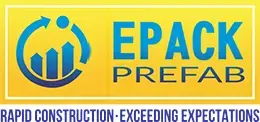Contrary to popular assumption, prefabrication and modular building development have been utilised as infrastructure development strategies for many decades. Processes and material preferences have evolved significantly over time, and the methodology’s technology implementation ranges have never remained static. The re-invention of prefabrication technology has been a big benefit for the infrastructure development industry, as it is the key to achieving sustainable green building development and efficient project progress, both of which contribute to the sector’s streamlined success.
Prefabrication’s rise as the preferred way of building construction is a trend that was easily foreseen, and because it offers numerous advantages over conventional building construction techniques, it has become the norm for the perfect modern building construction method.
When compared to conventional brick-and-mortar or concrete structures, prefabricated buildings in India are superior in all respects due to the enhanced speed of their production and the extraordinarily high-quality control maintained throughout the design and development phases. Prefabrication is a feasible alternative to conventional infrastructure construction projects of all sizes and complexity levels.
Prefabricated Buildings versus Conventional Building Construction
In the current state of building development, prefabrication and conventional construction techniques coexist, each with its own utility scopes and implementation left to the contractor or owner’s discretion. However, the predicted trends of rapid urbanisation and the need for expedited infrastructure development efforts across industrial, residential, agricultural, and commercial domains necessitate the use of improved construction methods that provide greater quality consistency, a faster rate of construction, and greater sustainability benefits. Prefabrication outperforms conventional building construction in all of these areas and is gaining momentum for widespread deployment across all industries.
A direct comparison between prefabrication and conventional construction
Let’s examine how prefabrication and conventional construction compare in important parts of the building process –
Construction Time
Compared to typical techniques of infrastructure development, prefabrication technology results in 50% quicker construction timeframes. Off-site structural component development and simultaneous site preparation results in a quicker process than linear methods.
Excellent Features
The development of prefabricated building structures by EPACK Prefab, the leading prefabrication firm in India, in off-site indoor factory environments and climate-controlled conditions leads in improved quality uniformity across the board. This results in greater process efficiency and enables higher quality control requirements.
Project Development
With the integration of cutting-edge automation gear and the prefabrication of buildings in off-site, in-house facilities, the project progresses at a faster rate, and with the prefabrication of buildings in off-site, in-house facilities, the project progresses at an even faster rate. Moreover, manufacture of structural components off-site reduces the project’s susceptibility to weather and other environmental element delays, hence expediting construction.
Cost Elements
Compared to conventional methods, prefabrication construction reduces the cost of building development by at least 50 percent due to increased construction speed, improved material efficiency, reduced construction time delays, fewer manual labour requirements, energy savings during development, and the elimination of anomalies from factory fabrication. In addition, prefabricated building enclosures result in long-term cost savings due to reduced energy consumption, less maintenance demands, zero rework requirements, and more reusability opportunities.
Process Efficiency Guidelines
Despite the consistent decline in skilled labour force availability, prefabricated building construction provides for better levels of efficiency. This procedure improves process, material, and schedule efficiency.
Impacts on Sustainability and the Environment
Sustainability is one of the primary advantages of prefabrication that makes it a more suitable building construction technology than conventional approaches. Prefabrication enables green construction procedures that prioritise less waste generation, safer working conditions, reduced environmental impacts, carbon-neutral processes, and overall improved energy savings during construction and service.
Compared to traditional or conventional procedures, prefabrication’s superior potential in all aspects of building development makes it more suitable for large-scale deployment. As the leading prefabrication construction firm in India, EPACK Prefab has established unmatched levels of quality in the design and development of prefabricated enclosures.











